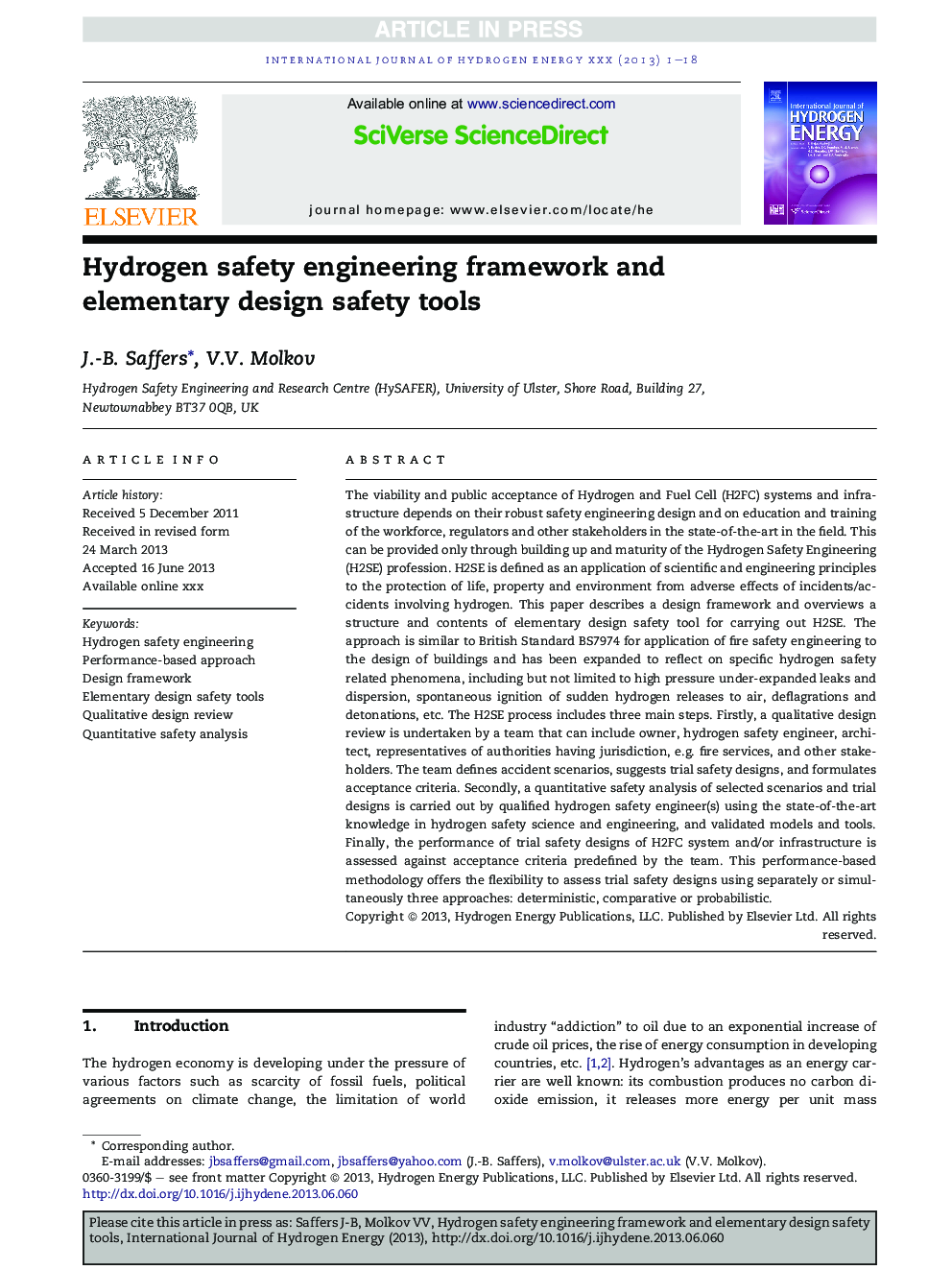| کد مقاله | کد نشریه | سال انتشار | مقاله انگلیسی | نسخه تمام متن |
|---|---|---|---|---|
| 7720196 | 1497498 | 2014 | 18 صفحه PDF | دانلود رایگان |
عنوان انگلیسی مقاله ISI
Hydrogen safety engineering framework and elementary design safety tools
ترجمه فارسی عنوان
چارچوب مهندسی ایمنی هیدروژن و ابزار ایمنی طراحی اولیه
دانلود مقاله + سفارش ترجمه
دانلود مقاله ISI انگلیسی
رایگان برای ایرانیان
کلمات کلیدی
مهندسی ایمنی هیدروژن، رویکرد مبتنی بر عملکرد، چارچوب طراحی، ابزار ایمنی طراحی اولیه، بررسی طراحی کیفی، تجزیه و تحلیل کمی ایمنی،
موضوعات مرتبط
مهندسی و علوم پایه
شیمی
الکتروشیمی
چکیده انگلیسی
The viability and public acceptance of Hydrogen and Fuel Cell (H2FC) systems and infrastructure depends on their robust safety engineering design and on education and training of the workforce, regulators and other stakeholders in the state-of-the-art in the field. This can be provided only through building up and maturity of the Hydrogen Safety Engineering (H2SE) profession. H2SE is defined as an application of scientific and engineering principles to the protection of life, property and environment from adverse effects of incidents/accidents involving hydrogen. This paper describes a design framework and overviews a structure and contents of elementary design safety tool for carrying out H2SE. The approach is similar to British Standard BS7974 for application of fire safety engineering to the design of buildings and has been expanded to reflect on specific hydrogen safety related phenomena, including but not limited to high pressure under-expanded leaks and dispersion, spontaneous ignition of sudden hydrogen releases to air, deflagrations and detonations, etc. The H2SE process includes three main steps. Firstly, a qualitative design review is undertaken by a team that can include owner, hydrogen safety engineer, architect, representatives of authorities having jurisdiction, e.g. fire services, and other stakeholders. The team defines accident scenarios, suggests trial safety designs, and formulates acceptance criteria. Secondly, a quantitative safety analysis of selected scenarios and trial designs is carried out by qualified hydrogen safety engineer(s) using the state-of-the-art knowledge in hydrogen safety science and engineering, and validated models and tools. Finally, the performance of trial safety designs of H2FC system and/or infrastructure is assessed against acceptance criteria predefined by the team. This performance-based methodology offers the flexibility to assess trial safety designs using separately or simultaneously three approaches: deterministic, comparative or probabilistic.
ناشر
Database: Elsevier - ScienceDirect (ساینس دایرکت)
Journal: International Journal of Hydrogen Energy - Volume 39, Issue 11, 4 April 2014, Pages 6268-6285
Journal: International Journal of Hydrogen Energy - Volume 39, Issue 11, 4 April 2014, Pages 6268-6285
نویسندگان
J.-B. Saffers, V.V. Molkov,
